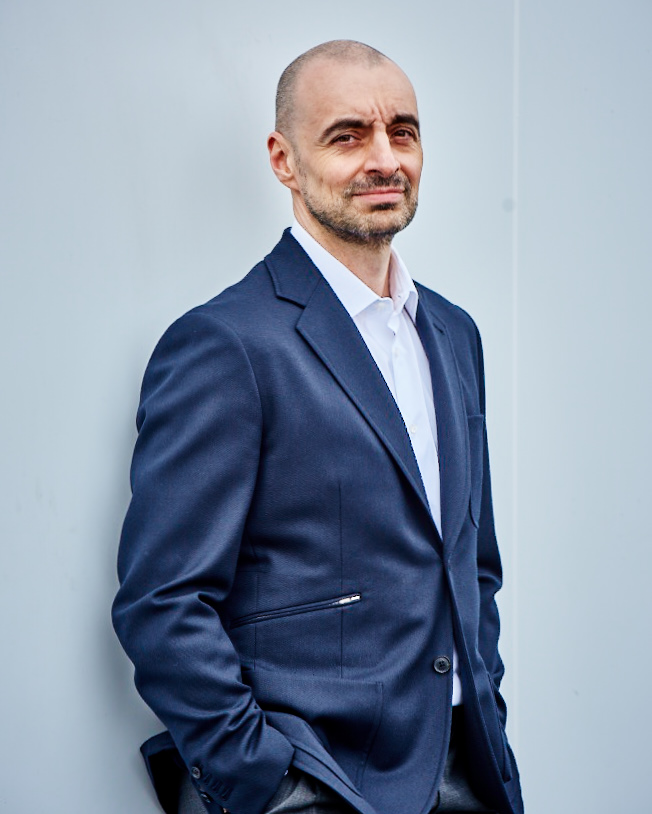‘Imagine If a Museum Charged 99 Cents to Take a Selfie’: Sara Fitzmaurice, Founder of FITZ & CO, Speculates on the Art World’s Digital Future


Artnet Gallery Network

If you’ve ever been to an art event in New York (or London or Los Angeles or Miami), you already know FITZ & CO, the international public relations, marketing, and strategy agency that has made the contemporary art world its niche, and which today partners will the leading museums, galleries and luxury brands.
At the helm of this global enterprise is Sara Fitzmaurice, its CEO and president, who started the agency in 1995. Recently Ulvi Kasimov, another art world entrepreneur — the founder of .ART, the art world’s own online domain — sat down with Fitzmaurice at her London office to discuss how the art world can adapt to the changing global landscape. Read their conversation below.

Ulvi Kasimov, philanthropist, collector, and founder of .ART.
Do you think the art world would benefit from modernization?
Oddly the art world, as sophisticated and cutting edge as it is supposed to be – with forward thinking, outside-of-the-box artists – is based on a very antiquated, 19th-century model. The breakthrough is bound to be in the digital realm. It could take many forms, and it’s a very interesting and big opportunity.
What do you mean by a 19th-century model?
The market is very much “mom and pop” shops. A lot of deals are done on handshakes. Institutionally, museums and other institutions tend to be quite conservative. It’s very straightforward: we raise money, we sell sponsorship, we sell tickets. That’s it. If you look at other industries, they are so much further ahead digitally and think and act in a 21st century way. If you take what Net-A-Porter did to the fashion industry, it’s quite remarkable. What’s the equivalent in the art world? There really isn’t one. It’s still very two-dimensional.
What will galleries of the future look like?
The single biggest rhetorical question I hear from galleries is, why do we have this huge space when we do very little business in the huge space? In New York’s Chelsea, scores of major collectors would come down to the neighborhood on foot or in their town car and go gallery to gallery, seeing shows and talking to the dealers. That doesn’t happen in the same way anymore. People wait for art fairs. They wait for these “event” moments.
What role will digital play?
We will be experiencing and buying and talking about art and looking at digital space in a way that we can’t imagine right now. You won’t ever be able to replace the experience of seeing a Van Gogh painting and seeing the brushworks. But will that matter in the future? It matters to me, and my generation and the ones before us, but the way our kids consume – information, images, everything – is completely different. What matters to them and how they experience the world is completely different.
How difficult is it to raise funds for exhibitions?
Fundraising is very challenging. You’re going to the same people year after year. You’re asking for private money. Your hand is out. You’re asking for corporate sponsorship dollars. You’re working to raise money up and down the food chain from the ultra high net-worth to a member base, and yet you’re sitting on this treasure trove of visual imagery and content. How can you monetize that towards the greater good of education: sharing those images globally and giving people a unique experience, and keeping the lights on so that these works can be preserved and shown and shared locally and internationally?

The Art Basel Cities House in Buenos Aires. Image courtesy of Art Basel.
Who or what has really impressed you with a new way of doing things?
Art Basel’s Kickstarter campaign was their way of engaging in corporate social responsibility. It’s saying, “The art world is our universe and we want to incubate and populate it at the grass roots level”. They leveraged their brand to fund these very small start-up initiatives that can contribute to the art ecosystem at the entry point. That’s a really exciting model. Also, through Art Basel Cities, they are taking the art fair and saying, “We’re actually a very powerful brand and we can infuse different cities with economic development through the arts”. They are bringing their experience of putting together a cultural festival, without the commercial side, into a city. That model launched in Buenos Aires in November 2017, and it will be very interesting to see how and if this develops. We’ve seen through the Miami Beach model what kind of cultural and economic impact the arts can have on truly transforming a city.
Some areas of the art world are being criticized for being old-fashioned, inefficient, and inequitable. What’s your experience?
The business side of the art world is indeed old-fashioned and inefficient. If you look, for example, at how galleries go about their sales, they are going into their “Rolodex” and going client by client, approaching the same clients again and again. There is no target marketing, automation or segmenting of their database. Many galleries market through a monthly “newsletter” which is highly ineffective. We have taken learnings from the online retail world and adapted them to galleries, and we’ve been teaching these systems to our gallery clients. The results and increased sales have been remarkable. The auction houses are investing a great deal in sales technology and digital marketing, but there is a long way to go.
Why do you work in the art world?
I love the diversity of what I do. With every new client I’m learning something new; it keeps it exciting and I am challenged everyday. I got into it through studying art history: learning stories of history through objects or architecture was fascinating. I still love the storytelling and a lot of the strategic work we do is in storytelling – coupled with problem solving towards business objectives. I enjoy that challenge. And on a personal level, the art opens up a world; a community. I can travel to almost any city globally and immediately plug in with locals through the art world, and have a totally different experience than visiting as a “non-local”.
What are the big trends in contemporary art?
The thing that is changing is the size of the art world. It’s become a bigger platform; a bigger playground. I have to think that the number of individuals who are making a living as an artist has grown substantially.
And the global footprint and value of the art world has also changed?
When I was starting out, we didn’t think about any geographic center beyond the US and Europe. Now it’s Mexico, Latin America and Asia, and now Africa is starting to emerge. This is a fundamental change. A successful artist friend of mine who arrived in New York in 1990 – the same time as me – said, “We never thought anyone would buy any of our stuff; we just felt like we had to make it. It didn’t occur to us that it would ever sell and we’d make any money”. That has changed. The art world is now big business and the stakes are high. This is true not just for galleries and auction houses but also for museums and non-profits.
What makes a successful artist?
I think there are a lot more opportunities for artists to market themselves. Ultimately, becoming a successful artist is a combination of things: one is talent – having a unique voice and something to say, of course. Two is being in the right place at the right time. Three is luck. I don’t think that really has changed.

Auction house employees man the phones during the “Beautiful Inside My Head Forever” sale at Sotheby’s, September 15, 2008. (Photo by Daniel Berehulak/Getty Images)
Work from a living artist can sell at auction for huge sums without a penny going to the artist themselves. Do you think this is fair?
When an artist’s work resells at auction they should get a piece of the pie. That should be a global policy. It’s absolutely ridiculous that an artist does not retain a piece of that. The best piece of advice for a young artist is “save your own work”. Artists who sell everything end up empty-handed. It’s very, very important for artists to hold back their own work, even when it’s difficult because they are scraping by. Damien Hirst sold his own work at a major sale at Sotheby’s. That was kind of genius. People frowned on it but why shouldn’t Damien Hirst participate in it in the same way that his collectors are?
Can digital play a part in improving the financial lot of museums?
Imagine if a museum charged 99 cents to take a selfie in front of its famous works? What would that look like? What could that raised money do to support education, restoration and maintenance of the building?
What do you think about the idea of “digital passports” for art?
The idea that every artwork has a unique identifier that travels with every artwork so you don’t lose that information is valuable and very interesting, especially if it’s adopted by artists. If an artist gives his or her artwork a unique identifier as it’s leaving the studio and it travels with that work, it would help combat forgery. Can you imagine doing a catalogue raisonné with artworks that have that data attached?
I’ve heard galleries operate in a very different way in Hong Kong. Tell me more.
People come to museums for very different reasons than they used to. It is entertainment and what’s wrong with that? In Hong Kong for example there are really no museums so how do people see art? They visit commercial galleries. Swire Properties has placed extraordinary works of art inside its shopping mall. People get to experience art for free. It’s bringing art to a whole new audience.
Is this also happening in the West?
I am on the board of the Public Art Fund in New York, which is the global leading presenter of public art. It’s taken work off a white pedestal and literally brought it down to the street. It’s a really important model to look at.
Is the art world embracing digital in the way it should and who are the pioneers?
There is a long way to go, and those that are leading are reaping the rewards. LACMA and the Walker Art Center are both doing a very good job. Nobody has broken the “white box”: nobody has come out with something so mind-blowing yet…but somebody is going to.
Should art organizations think more like brands?
They are brands; how could they not think like them? They’re brands. I’m sorry if you don’t want to be a brand – you are a brand. Whoever’s not embracing that I think is not being true to reality. The Tate is as sterling a brand as there is. What’s wrong with that?
This interview is excerpted from Kasimov’s book The Art of the Possible, a series of interviews that explore the ways Internet technology can remake the art world. Additional interviews from the book will be published here in the coming months.